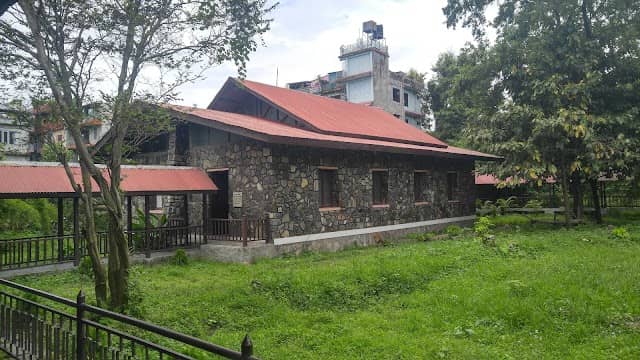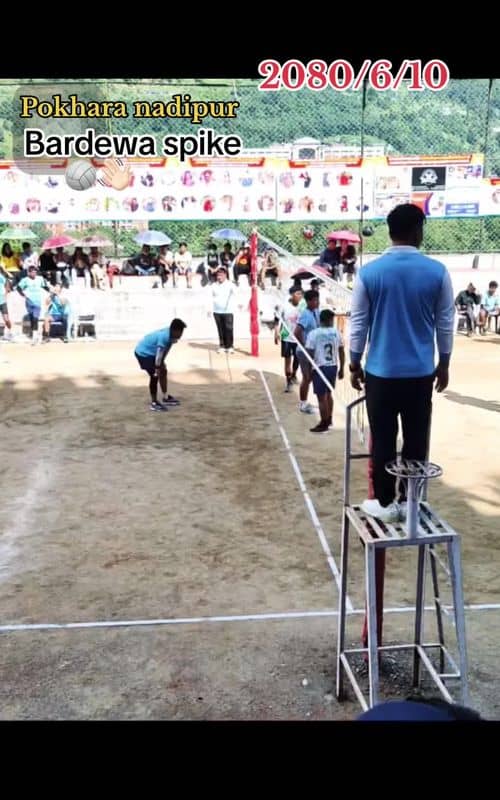Pokhara Regional Museum
Discover Nepal's ethnic heritage through traditional attire, tools, and cultural dioramas in this rustic regional museum.

Highlights
Must-see attractions

Social
From TikTok & Reddit
Best Time
Fewer crowds, better viewing
Pokhara Regional Museum
Best Time
Fewer crowds, better viewing

Highlights
Must-see attractions
Discover Nepal's ethnic heritage through traditional attire, tools, and cultural dioramas in this rustic regional museum.
"A fascinating glimpse into Nepal’s rich cultural and historical heritage, capturing the essence of its diverse history."
📸 Photo Ticket Needed
Remember to buy a separate ticket (NRs. 25) if you plan to take photos inside the museum.
📅 Check Opening Days
The museum is currently closed on Tuesdays and Wednesdays. Always confirm hours before your visit.
Highlights
Discover the most iconic attractions and experiences

Ethnic Community Exhibits
Discover traditional dresses, tools, and living styles of diverse Nepali ethnic groups like Gurungs and Magars.

Honey Collection Diorama
An interesting display illustrating the traditional methods used for collecting honey in the region.

Traditional Tools & Instruments
See a collection of ancient tools and instruments that offer a glimpse into past livelihoods.
Plans like a pro.
Thinks like you
Planning Your Visit
Understand the Exhibits
Photography & Visiting Hours
Best Times
Insider Tips
from TikTok, Instagram & Reddit
📸 Photo Ticket Needed
Remember to buy a separate ticket (NRs. 25) if you plan to take photos inside the museum.
📅 Check Opening Days
The museum is currently closed on Tuesdays and Wednesdays. Always confirm hours before your visit.
💡 Learn About Cultures
Great for understanding Nepal's diverse cultures, traditions, and lifestyles if you're new to the region.
🖼️ Art & Architecture
Appreciate live sketches of the museum's architecture, showcasing local artistic talent.
Tips
from all over the internet
📸 Photo Ticket Needed
Remember to buy a separate ticket (NRs. 25) if you plan to take photos inside the museum.
📅 Check Opening Days
The museum is currently closed on Tuesdays and Wednesdays. Always confirm hours before your visit.
💡 Learn About Cultures
Great for understanding Nepal's diverse cultures, traditions, and lifestyles if you're new to the region.
🖼️ Art & Architecture
Appreciate live sketches of the museum's architecture, showcasing local artistic talent.
What Travellers Say
Reviews Summary
Visitors find the Pokhara Regional Museum to be an interesting, albeit small, cultural experience. It offers a good glimpse into the history and traditions of Nepal's ethnic groups, with displays of clothing, tools, and dioramas. While some feel it could be more engaging, many appreciate its role in preserving local heritage and find it a worthwhile visit for a quick cultural immersion.
"The museum has 4 galleries that you can visit. You can learn a little bit about different Nepali casts, how they dress and where they live. There are some exhibits of tools and instruments.
There is a diaporama (I believe that's the name) of a few traditional settings. There is one that shows you how they used to collect honey that was interesting.
It is a short museum, it is not a must see but it was interesting enough for me. I learned things which made it worth the visit."
Marisol Acuña
"The Regional Museum in Pokhara offers a fascinating glimpse into Nepal’s rich cultural and historical heritage. From ancient tools and traditional attire to detailed exhibits on ethnic communities like the Gurungs, Thakalis, and Magars, the museum captures the essence of Nepal’s diverse history. Each section tells stories of Himalayan life, past struggles, and evolving traditions. It's a must-visit for anyone wanting to understand the soul of Nepal beyond its landscapes."
Ananay Verma
"Not so interesting as it used to be.
The outside area is more fun and interesting compared to the real museum.
Ticket price: NRs. 25 per person (for Nepalese)
If you are taking photos, you have to buy another ticket worth NRs. 25.
Note: Museum will be closed on Tuesday and Wednesday as of now (after Nepal Government started giving holiday on Sunday)"
Ashish Sapkota
What People Like
What People Dislike
Frequently Asked Questions
🚇 🗺️ Getting There
The museum is located in Pokhara, Nepal. You can reach it by local taxi or bus. It's a relatively small museum, so it's easy to find once you're in the city center.
Yes, local buses and taxis are readily available in Pokhara and can take you to the museum.
From Lakeside, a short taxi ride or a pleasant walk (depending on your accommodation location) will get you to the museum.
While specific parking details aren't widely mentioned, it's generally advisable to use local transport or inquire about parking upon arrival, as it's a smaller attraction.
Depending on your starting point, walking can be an option. It's a good way to see more of the city.
🎫 🎫 Tickets & Entry
The ticket price is NRs. 25 per person for Nepalese citizens. Foreigner pricing may vary, so it's best to check on arrival.
Yes, a separate ticket costing NRs. 25 is required if you wish to take photos inside the museum.
The museum is currently closed on Tuesdays and Wednesdays. Other days typically have standard museum hours, but it's wise to confirm locally.
Online booking is not commonly mentioned. Tickets are typically purchased at the museum entrance.
Information on specific discounts is not readily available. It's recommended to inquire at the ticket counter upon your visit.
🎫 🧭 Onsite Experience
The museum features four galleries with exhibits on Nepali casts, their traditional attire, tools, instruments, and dioramas depicting traditional life, like honey collection.
It's a short museum, typically taking about 30-60 minutes to explore all the galleries.
Yes, children can find the exhibits interesting, especially the dioramas and displays of traditional items.
Guided tours are not explicitly advertised, but the exhibits are generally self-explanatory. You can learn a lot by reading the descriptions.
The museum is described as small and rustic, offering a glimpse into local culture. Some find it less engaging than it used to be, while others appreciate its role in preserving traditions.
📸 📸 Photography
Yes, you can take photos, but you'll need to purchase a separate photography ticket for NRs. 25.
The main restriction is the need for a photography ticket. Be mindful of other visitors and avoid flash photography if it might disturb exhibits or people.
The dioramas and displays of traditional clothing and artifacts are popular subjects for photos.
If you enjoy documenting your travels and want to capture the cultural details, then yes, it's worth it.
Urban sketchers have visited and sketched the museum's architecture, suggesting it's a good spot for artists.
For Different Travelers
Tailored advice for your travel style
👨👩👧 Families with Kids
Keep in mind that it's a relatively small museum, so it won't take up a whole day. The NRs. 25 ticket price is quite affordable, and the additional photography fee is also reasonable if your kids enjoy taking pictures. It's a good way to introduce children to the diverse cultures of Nepal in a concise and accessible format.
📚 Culture Enthusiasts
While some reviews suggest it might not be as grand as it once was, the museum's commitment to preserving and presenting dead traditions is commendable. It provides a unique perspective on Nepal beyond its stunning landscapes, allowing visitors to connect with the soul of the country. The detailed information and organized exhibits make it an informative experience for any culture enthusiast.
Deep Dives
In-depth insights and expert knowledge
Cultural Immersion at the Museum
One of the most engaging aspects of the museum is its dioramas, which recreate scenes from traditional life. A particularly noted exhibit is the one depicting the historical methods of honey collection, offering a fascinating glimpse into a practice that was once crucial for sustenance and trade. These visual narratives help visitors understand the ingenuity and resourcefulness of the people who inhabited these lands. The museum's effort to keep these traditions alive is appreciated by many, ensuring that even if younger generations forget, the history remains accessible.
While the museum is praised for its informative content, some visitors note that the naming of all items could be more comprehensive. This suggestion highlights an opportunity for enhancement, ensuring that every artifact tells its full story. Despite this, the overall organization is considered beautiful, providing detailed information that helps visitors grasp the essence of Nepal's rich and varied cultural tapestry.
Photography and Artistic Inspiration
Beyond the internal exhibits, the museum's architecture itself has drawn the attention of artists. Urban sketchers have found inspiration in its design, creating live sketches that highlight the building's aesthetic and its place within Pokhara's landscape. This suggests that the museum is not only a place of historical learning but also a site of artistic appreciation, offering different perspectives for visitors.
It's important to note the practical aspect of photography: a separate ticket is required. This ensures that visitors who are there purely for the cultural experience are not disrupted by constant camera flashes, while still allowing those who wish to capture memories or artistic inspiration to do so.




Social
from TikTok, Instagram & Reddit